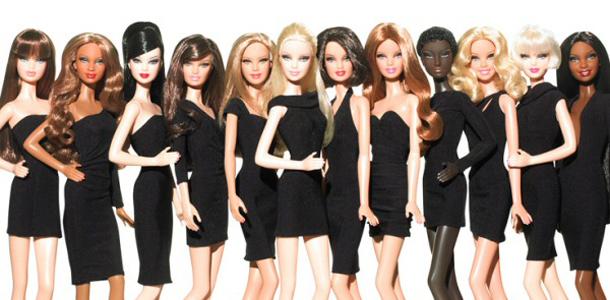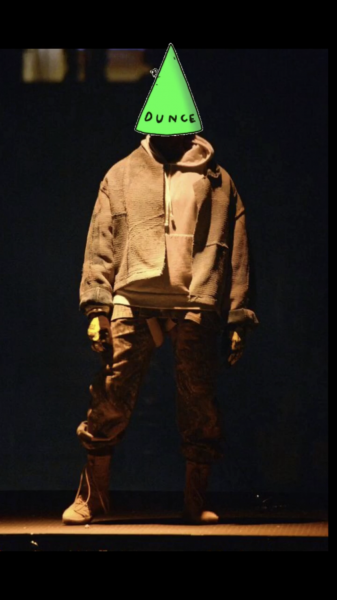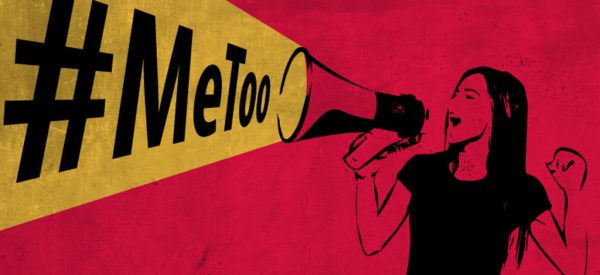The age old tale of Barbie and the body proportions of women
April 27, 2013
Many young girls love to play with Barbie dolls, dressing her up, brushing her hair and playing out a variety of scenarios often seen and experienced in real life and have done so for over 50 years.
The Barbie doll has been around since she was introduced in 1959 by Mattel. She has a facebook page and twitter account and can be followed on tumblr, foursquare and instagram.
Her popularity is evident in these figures posted in the “By the Numbers” section on barbiemedia.com: 1 Barbie doll is sold every 3 seconds worldwide, Barbie has over 7 million facebook likes and ninty percent of girls age 3 to ten own at least 1 Barbie, according to the website.
Every few years it seems that the media gets all hyped up over Barbie and we get a flurry of articles touting the impossibility of Barbie being a real woman based upon her proportions.
The Huffington Post posted an article titled “Barbie Body Would Be Pretty Odd-Looking in Real Life,” with infographics charting the difference between Barbie’s proportions and those of the average US woman on April 12.
“Barbie’s body wouldn’t have the room it needs to hold all of its vital organs, and her uber-skinny ankles and child-size feet would make it necessary for her to walk on all fours,” according to the article.
Sure, Barbie would be ridiculous, even impossible, if her proportions were real, but they aren’t. Barbie is a doll.
If you want to talk doll proportions in relation to real women, take a look at the Bratz line of dolls, their heads are humongous. Maybe it’s because they are so ridiculously huge that no one could realistically compare them to a real woman.
As a woman who grew up playing with Barbie dolls I don’t see what the big deal is.
I had a number of different Barbie dolls, including the wedding Barbie and Ken dolls. I still fondly remember the Christmas that I got a blue Barbie convertible.
As a young girl I found Barbie to be beautiful and loved changing her clothes but I never thought that I should look just like her. I never developed an eating disorder in an effort to emulate her tiny waist.
To those that think that Barbie is setting a bad example for young girls, I say get over it.
Barbie is a toy, and a pretty fun one at that, at least to a little girl.
While there have been many articles written about the impossibility of Barbie’s proportions being realistic, there have been surprisingly few studies done on the actual physical and psychological impact that Barbie has on young girls.
The most recent study conducted by Doeschka J. Anschutz and Rutger C. M. E. Engels was published online in Aug. 2010 and compared the effects on body image and food intake in young girls while playing with thin dolls versus average size dolls.
The study found that girls body esteem and actual-ideal body size discrepancies were not negatively affected.
There are some women who take their adoration for Barbie to the extreme.
A Ukrainian model by the name of Valeria Lukyanova, 23, is touted as a real-life Barbie. With a tiny waist, large bust, long blonde hair and big blue eyes it isn’t much of a stretch to see the resemblance.
I find her incredibly creepy, especially the way she uses excessive makeup to give her that plastic look.
People should learn to accept Barbie for what she is, a toy designed for young girls. Quit placing the blame for everything from eating disorders to poor self-esteem on the shoulders of a plastic plaything.
















Loraine • Oct 23, 2013 at 8:40 am
Thank you so much for writing this. I have been thinking the same thing for years. However, every time I read an article or watch a report in the “Barbie disproportionate body” subject, it’s always the same premise, that Barbie couldn’t possibly be real and is contributing to the low self esteem of young girls. I never saw the connection. I grew up the same way, playing with barbies and other comparable dolls and never felt the desire to look like them, much less harm my self to do so. I am no psychologist, but in my humble opinion I think that those who do obsess over Barbie and what image issues she may be causing are actually suffering from a mild form of BDD, body dysmorphic disorder. A few of the symptoms of BDD is an obsession with body image, a compulsion to seek information about body image and a constant comparison of one self to the image of who you want to look like. In the case of some people it’s Barbie because she’s so popular and so prevalent that it makes her an easy target. However, as with BDD, most body image issues start at home, with the main factor being the messages one receives from your parents and your environment, what your dolls look like being a minor factor at best.